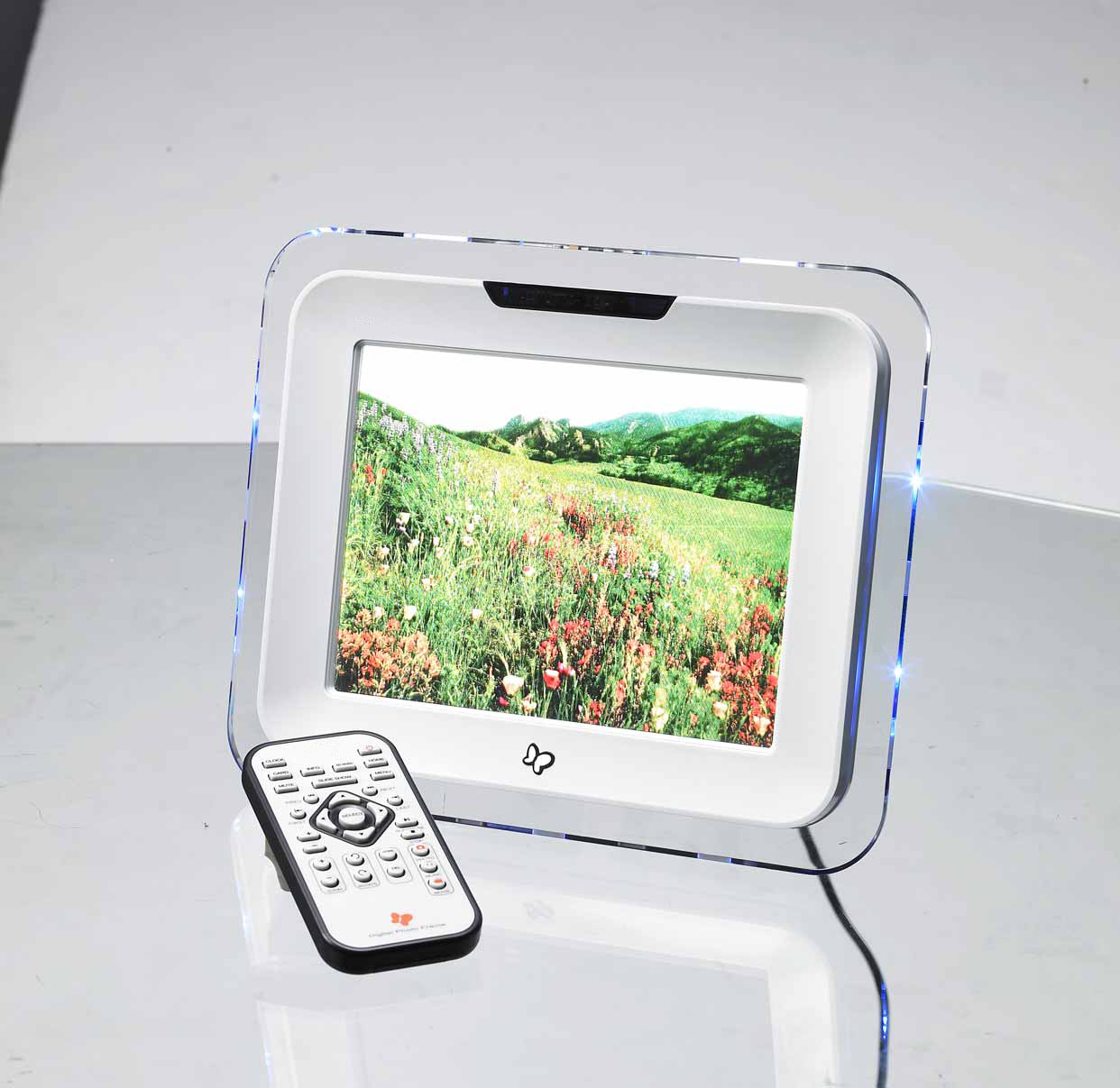If you're just starting out with a digital camera, or you are considering buying a new camera, and you like what you've heard about digital photography, you probably have a few burning questions about the technology. What replaces the film? Do you need a computer? What process replaces getting your pictures developed, and how can you store and view all your photos without having to print them off? This is a short guide that will answer these questions, and give you an idea about what your options are as far as storing, retrieving, and viewing your digital photographs goes.
When you take a picture with an optical film camera, you have a shutter opening for a fraction of a second, exposing photosensitive film to the light which is projected into an image by the lens, onto the surface of the film. The film stores a negative color impression of your image. Later it is “fixed” then developed into a “positive” true color photograph in a dark room (or these days, a compact machine which performs the same task.) When you're done, you get a copy of the fixed negative, and the true color photo.
The principle of digital photography isn't much different. A microprocessor-controlled photosensitive microchip-wafer is programmed to become receptive to light projected onto its surface by a lens for a fraction of a second. The chip then digitizes that image into a sequence of tiny colored dots, called pixels. This information is stored as a numerical sequence, which is then recorded to the camera's “memory”. This is the important part. A camera usually has a small amount of “on board” memory, sufficient to store somewhere between 15 and 100 photos. The amount of space that a given photo takes up on the memory depends on a number of factors, but quite simply, the more detailed a digital photograph is, the higher the number of dots used to produce an image is, and therefore, the sequence of numbers representing those dots is longer. So, a high resolution digital photo takes up more digital space in memory.
The great thing about digital memory is that it can be written to, and read from not hundreds, but hundreds of thousands, or even millions of times, without wearing out. Because cameras only have a relatively small amount of on board memory, removable memory cards, termed “flash cards” have been developed to store larger amounts of data. While your camera may store 15 or 20 high resolution photographs on it, flash cards can store between a couple of hundred, and several thousand such images, depending on the digital capacity of the card, and the photo quality. A flash card is a thin wafer, between roughly 1/32” and 1/8th of an inch thick, and usually not much larger than an inch square. There are several different formats of these cards in common use, and they make up the bulk of common image storage devices. These include: Secure Digital; CompactFlash (1 and 2); Memory Stick; MultiMediaCard; xD-Picture Card; and SmartMedia. All of these are usually abbreviated to their initial capitals. Of these, SD and CF are the most common.
You may have heard that all computers speak in 1's and 0's before, and this is true. The standard unit for measuring digital data is “bytes”. For the purposes of this exercise, 1 byte is always equivalent 8 “bits” which are either a 1 or a 0. So a sequence of eight 1's and 0's is 1 byte. This is a very, very small amount of data. On a computer, a byte is only enough information to store a single character, such as the period at the end of the sentence. To make things easier, we work in kilobytes kB (1024 bytes), megabytes MB (1024 kB), and gigabytes GB (1024 MB, or 10243 – that's 1,073,741,824 bytes!).
To give you an idea of scale, your medium or low resolution photographs on your camera are probably somewhere around 500kB, and your highest resolution photos are probably around 2.5MB. Commonly available flash cards range in size from 64MB, 128MB, 256 MB, 512 MB, 1 GB, 2 GB, 4 GB, 5 GB, 6 GB, and a few 8GB flash cards have recently been released. This means you could store more than 3000 very high resolution photographs on an 8 gigabyte flash card, no larger than an inch square! The smaller cards are much more cost effective, with a 512MB flash card being between $10 and $20 new. The 8GB ones are closer to the $250+ mark, and represent the pinnacle of miniaturized consumer-grade data storage. And for one final trivial point of reference, computers these days come with hard disk drives ranging in capacities between 80GB, and 500 GB, which makes your computer an attractive option for storing your photos.
If all that didn't make a lot of sense to you on the first read, don't worry. It's a subject that gets more complex the deeper go in, and people devote their lives to its study. The beauty is that you don't need to fully understand it to use it effectively. For a handful of dollars, you can store many hundreds of images. You can reuse your flash cards almost indefinitely. They will eventually get a scratch or crack from the friction of being removed and used, and they are very sensitive to static electricity, so eventually, they will fail. For this reason, it might be a good idea for you, or a friend with a computer, to back up your photos onto a more resilient medium such as a data CD or DVD.
This brings us to the next point: Do you need a computer?
The short answer is no, but it helps.
Fortunately, the market has developed whole product ranges for people who wish to remove the computer from the equation altogether, recognizing the demand that existed for such options. These days you can buy high-resolution printers for the home capable of producing photos almost as good as what you can have developed at the pharmacy, that plug straight into your camera, or have an on-board card reader. If you have a particularly nice photograph you want professionally printed, most photo developers have facilities to do just that. All you need to do is bring in the flash card or camera that the image is on. What a computer does offer you is a convenient way to edit and sort your collections. You can still view your photos on the camera itself, and most cameras are capable of plugging into your television, thereby allowing you to go through your photos like a slide show.
Never before have we had the ability to store so much information so easily. There is a huge range of options for storing your photos, and if you most like the idea of a sort of digital reusable film, capable of storing hundreds or thousands of photos, then you can pick up a small handful 512MB flash cards, and have a photo album so big you could never fill it. But if you do, never mind: there are already 32GB memory cards on the market. This means that on a 10 megapixel camera you can store at least a massive 6400 photos on it!
Delkin Devices 32GB eFilm Secure Digital (SDHC) PRO Card

sd card
memory card



























